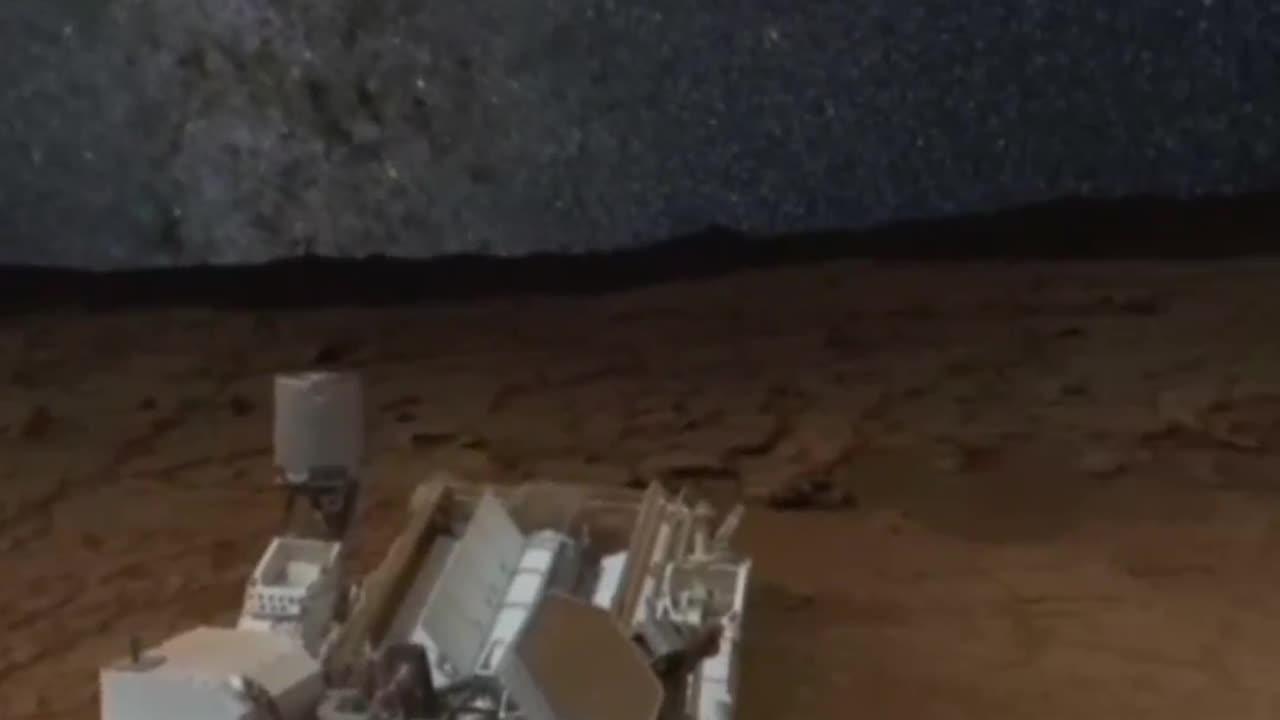Premium Only Content

How Mars Look Like In The Night
Mars is the fourth planet from the Sun in our solar system. It is often referred to as the "Red Planet" due to its reddish appearance, which is caused by iron oxide, or rust, on its surface. Mars is a terrestrial planet with a thin atmosphere, and its surface features include valleys, canyons, polar ice caps, and the largest volcano in the solar system, Olympus Mons.
Key facts about Mars:
Physical Characteristics: Mars has a diameter of about 6,779 kilometers (4,212 miles), roughly half the size of Earth. Its gravity is weaker than Earth's, about 38% of Earth's gravity. It has a day length of about 24.6 hours and a year length of approximately 687 Earth days.
Atmosphere: Mars has a thin atmosphere composed mostly of carbon dioxide (about 95.3%), with traces of nitrogen and argon. The thin atmosphere means that Mars has a weak greenhouse effect, resulting in colder surface temperatures compared to Earth.
Surface Features: Mars has a diverse landscape, including vast plains, towering volcanoes, deep canyons, and dry riverbeds. Valles Marineris is one of the largest canyons in the solar system, and Olympus Mons is a massive shield volcano. Mars also has polar ice caps made of water and carbon dioxide.
Water: Evidence suggests that Mars once had liquid water on its surface, and there are features that suggest the presence of ancient rivers, lakes, and oceans. However, most of the water is now frozen in the polar ice caps or subsurface ice.
Exploration: Mars has been a major target for space exploration. Numerous robotic missions have been sent to study the planet's geology, climate, and potential for past or present life. Notable missions include the Mars rovers (Spirit, Opportunity, Curiosity, and Perseverance) and various orbiters.
Possibility of Life: Scientists are interested in Mars' potential to host life, either currently or in its past. While there is no direct evidence of current life, the planet's history of water and the discovery of organic molecules have fueled speculation about the possibility of past microbial life.
Future Missions: Future plans for Mars exploration include sending humans to the planet, with organizations like NASA and private companies like SpaceX actively working on the technology and strategies to achieve this goal. These missions could pave the way for establishing a human presence on Mars in the coming decades.
Challenges: Mars exploration and colonization pose numerous challenges, including the harsh environment, radiation, lack of breathable atmosphere, and the need for life support systems. Overcoming these challenges requires advanced technology and careful planning.
Mars continues to be a focus of scientific research and exploration as humanity seeks to understand its history, potential for life, and its role in the broader context of our solar system.
-
 2:08:38
2:08:38
Slightly Offensive
8 hours ago $14.01 earnedDEEP STATE WINS?! Matt Gaetz OUSTED as AG & Russia ESCALATES War | Guest: The Lectern Guy
43.5K17 -
 1:47:36
1:47:36
Precision Rifle Network
7 hours agoS3E8 Guns & Grub - the craziness continues
40.6K2 -
 41:37
41:37
Kimberly Guilfoyle
9 hours agoPresident Trump Making all the Right Moves,Live with Border Union Chief Paul Perez & Lawyer Steve Baric | Ep. 176
135K37 -
 19:38
19:38
Neil McCoy-Ward
12 hours agoMASS LAYOFFS Have Started... (How To Protect Your Income)
40.9K7 -
 46:21
46:21
PMG
1 day ago $2.76 earned"Venezuelan Gang in 16 States, Animal Testing Crackdown, & Trump’s Nominee Battle"
28.1K9 -
 LIVE
LIVE
VOPUSARADIO
11 hours agoPOLITI-SHOCK! WW3!?, BREAKDOWN OF THE WORLD EVENTS & R.A.G.E. (What it means & What's next!)
450 watching -
 1:00:10
1:00:10
The StoneZONE with Roger Stone
8 hours agoWhy Democrats Hold Poor Children Hostage in Failing Schools | The StoneZONE w/ Roger Stone
51.7K6 -

Tundra Gaming Live
8 hours ago $1.25 earnedThe Worlds Okayest War Thunder Stream//Air Force Vet Flys Jets
29.1K -
 2:00:54
2:00:54
Redacted News
9 hours agoBREAKING! Putin just SHOCKED the world, launches nuclear capable warheads "NATO can't stop it"
189K601 -
 55:37
55:37
Candace Show Podcast
9 hours agoMatt Gaetz Out, Jussie Smollett Walks Free! | Candace Ep 108
151K362